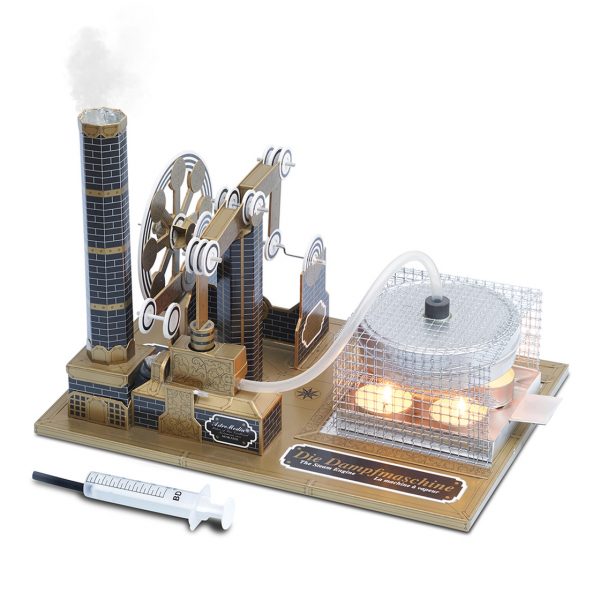Mint kits: steam engine
The production of steam by heating water above the boiling point and exploiting the corresponding pressure was one of the first attempts in human history to replace the work of human muscle power with a machine. Probably in the first century AD, Hero of Alexandria built a machine that converted the speed or momentum of the steam emerging from a nozzle into rotary motion: Hero Engine - probably the first steam-powered engine. The basic idea of the steam engine was born. The invention of the actual steam engine in 1705 by Thomas Newcomen and its improvement by James Watt around sixty years later marked the beginning of the “Industrial Revolution” and formed the basis for the energy supply of our current industrial society. It is a great mystery why it took almost two millennia for the further development of Hero's idea to ultimately usher in the Industrial Revolution with its serious upheavals. Today, the optimized Clausius Rankine steam process is the most widely used thermodynamic process. It forms the basis of all conventional power plants. It is very likely that the concept of the steam process with alternative working media to convert solar and geothermal heat into electrical energy will play a crucial role in the future. The steam engines on this page are a reminiscence of the origins of this technology and provide an exciting introduction to the associated thermodynamics.

